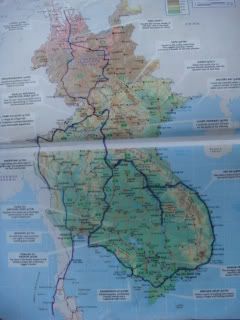
Friday, October 16, 2009
Thursday, October 15, 2009
LAOS REVISITED THE DEEP SOUTH
After a month in Vietnam I headed west through very unwelcome rain to the border crossing of Lao Bao Thinking I was going to grow webbed feet with the never ending deluge of rain I continued on to the beautiful french colonial town of Savannakhet. Luckily the destructive typhoon that ravaged the Phillipines and Vietnam only left a path of fallen trees and local flooding in southern Laos.
The highlight in lthe deep south would have to be the 4000 Islands of the lower Mekong. Just before the Mekong enters Cambodia its banks stretch an amazing 17km from east to west. Many of the larger islands are inhabited by local villagers going about their daily chores (rice growing) without electricity and seemingly oblivious to the outside world.
On the tourist islands of Don Det and Don Khone you can rent a bungalow for $2 a night, relax in a hammock whilst reading a good book and sipping on a beer Laos ( a common pastime). If you muster up enough energy you can hire a bicycle and leisurily cycle around he islands under the shade of palm trees.
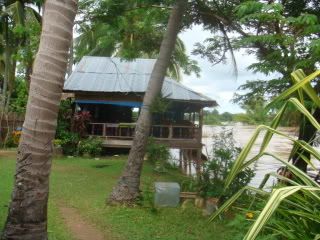
The southern island of Don Khone has the Li Phi falls - which in reality are a series of raging rapids and are said to have a greater flow of water than the Niagra Falls.
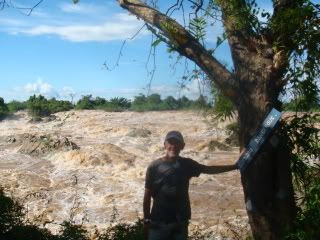
The first full moon in Oct sees all of the towns along the Mekong celebrate with dragon boat racing. This is a time to make merry, eat local cuisine and wake up the moring after with a raging hangover after indulging in to much Lao Lao (a very potent rice wine). As part of the ceremonies you can make your own bamboo boat that in the evening you light up with candles and float down the Mekong. It is quite a memorable sight to watch scores of these lights flickering downstream on the Mekong.

The highlight in lthe deep south would have to be the 4000 Islands of the lower Mekong. Just before the Mekong enters Cambodia its banks stretch an amazing 17km from east to west. Many of the larger islands are inhabited by local villagers going about their daily chores (rice growing) without electricity and seemingly oblivious to the outside world.
On the tourist islands of Don Det and Don Khone you can rent a bungalow for $2 a night, relax in a hammock whilst reading a good book and sipping on a beer Laos ( a common pastime). If you muster up enough energy you can hire a bicycle and leisurily cycle around he islands under the shade of palm trees.

The southern island of Don Khone has the Li Phi falls - which in reality are a series of raging rapids and are said to have a greater flow of water than the Niagra Falls.

The first full moon in Oct sees all of the towns along the Mekong celebrate with dragon boat racing. This is a time to make merry, eat local cuisine and wake up the moring after with a raging hangover after indulging in to much Lao Lao (a very potent rice wine). As part of the ceremonies you can make your own bamboo boat that in the evening you light up with candles and float down the Mekong. It is quite a memorable sight to watch scores of these lights flickering downstream on the Mekong.

HIGHLIGHTS OF THE COASTAL ROAD
HOI AN Vietnam's version of China's ancient cities of Lijiang and Dali. A city caught in a time warp chock full of atmosphere, character and of course an over abundance of tourist shops selling everything from fine silk, ceramics and marble jewellery.
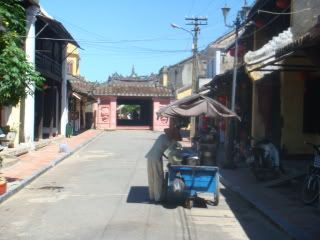
DANANG TO HUE BY SCENIC RAILWALY One of the most scenic rail journies in the world. As Vietnam's central mountain range reaches the sea the train journey slowly winds its way over the range giving passengers some of the most breathtakingly beautiful coastal views that you could imagine.
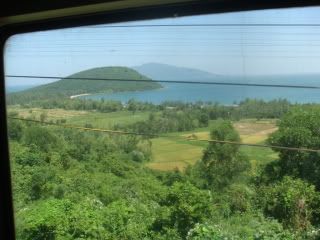
HUES CITEDAL - IMPERIAL CITY A city enclosed in 10 metre high walls with canals, moats and towers - the tombs of the Ngugen Emperors.
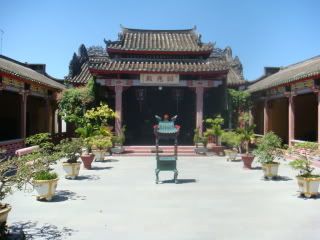
THE BEACHES OF NHA TRANG, MUI NE AND HOI AN All with beautiful stretches of fine white sand, the occasional wave for a bit of body surfing and in the low season hardly a falang to be seen. You can recumber on a beach deck chair reading your favourite novel whilst indulging in a Beer Lao - the peoples' choice.
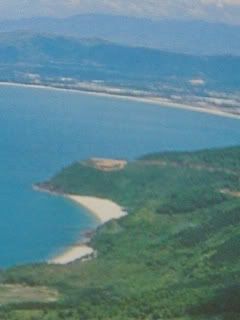

DANANG TO HUE BY SCENIC RAILWALY One of the most scenic rail journies in the world. As Vietnam's central mountain range reaches the sea the train journey slowly winds its way over the range giving passengers some of the most breathtakingly beautiful coastal views that you could imagine.

HUES CITEDAL - IMPERIAL CITY A city enclosed in 10 metre high walls with canals, moats and towers - the tombs of the Ngugen Emperors.

THE BEACHES OF NHA TRANG, MUI NE AND HOI AN All with beautiful stretches of fine white sand, the occasional wave for a bit of body surfing and in the low season hardly a falang to be seen. You can recumber on a beach deck chair reading your favourite novel whilst indulging in a Beer Lao - the peoples' choice.

Friday, September 18, 2009
THE COASTAL ROAD PHAN THET TO DONG HA
Thailand may have its intensly dense and rugged mountain ranges surrounding Mae Hong Song in its north western provinces. Laos may have its UNESCO world heritage site of Luang Prabang - a small town with a distinctly french flavour. Narrow cobble stoned streets with weathered shop facades. China's Yunnan Province may have its Tiger Leaping Gorge - one of the deepest gorges in the world. A must do 16km trek that avails itself to unbelievable views measuring some 3900 metres fro the depths of the waters of the Jinsha river to the peaks of the year round snow capped mountains of the Haba Shan. Cambodia may have its Angkor - the home of the ancient Khmer empire - a temple renowned for being the largest religious monument in the world.
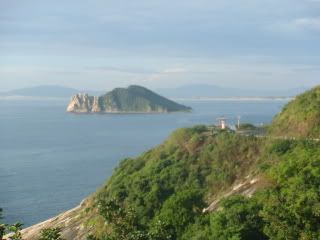
But, Vietnam has its coastal road stretching some 2000km from HCMC to Hanoi. A road that has stunningly beautiful horseshoe bays like Nui Ne, Nha Trang, Da Nang and Hoi An. As you cycle up Highway 1 your eyes are captivaated by the rugged mountain range that stretches the length of the country. Rice fields from the foot of the mountains to the dunes of the sea. Villages toiling in the heat of the midday sun reaping the rice harvest by hand. Endless kilometres of the highway lined with rice drying the the sun. Yes, this highway has it all.
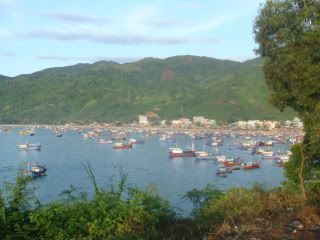

But, Vietnam has its coastal road stretching some 2000km from HCMC to Hanoi. A road that has stunningly beautiful horseshoe bays like Nui Ne, Nha Trang, Da Nang and Hoi An. As you cycle up Highway 1 your eyes are captivaated by the rugged mountain range that stretches the length of the country. Rice fields from the foot of the mountains to the dunes of the sea. Villages toiling in the heat of the midday sun reaping the rice harvest by hand. Endless kilometres of the highway lined with rice drying the the sun. Yes, this highway has it all.

Thursday, September 3, 2009
VIETNAM - THE DELTA
Question: What is the first thing to wear out and be replaced on a Vietnamese motorbike?
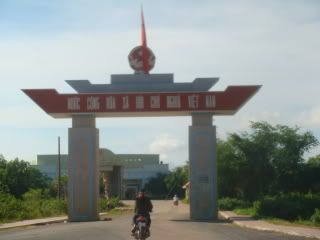
The Mekon Delta is not only Vietnam's rice basket but also its fruit bow. For
kilometre after kilometre the flat lands of the delta are either in the stage of planting, growing or harvesting of the staple diet of the vietnamese millions. As you head towards HCMC the landscape turns to undulating and the fields are transposed to an endless line of orchard of every possible delicious tropical fruit imaginable. On the side of thye road local growers tend their stalls selling pinapples, bananas, dragon fruit, papaya, watermelon, longon, strawberries and durian fruit - just to mention a few.
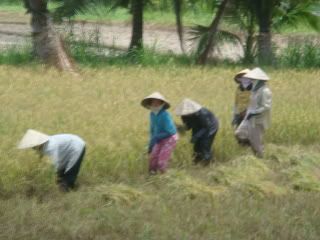
As the mighty Mekong river winds its way south towards the south China Sea its many tributaries are amass with colourfully decorated fishing trawlers and barges ferrying goods form town to town. From the border of Cambodia I had as many as 9 crossings before reaching HCMC. The people are incredibly friendly and go about their daily routine never seeming to be fazed or stressed.

My highlight of the Delta was a daylong riverboat cruise visiting the Can Tho floating markets which are a colourfu and bustling confusion of boats plied hight with vegetables and fruits. Housewives, paddling their sampans from boat to boat bartering and haggling before negotiating the narrow canals back to their family homes - life revolves around the water.

HCMC My main aim was to successfully negotiate from the southern approaches to the central Siagon Railway Station where I could catch the train to Phan Tiet on the east coast. I soon learned that train station translated to the Vietnamese equivalent of "ben xe" as I had to ask for directions as many as 20 times before stumbling upon Siagon Central - hidden off some back alley. As in China, signs are only in Vietnamese making locating landmarks a little frustrating to say the least.
With a population exceeding 6 million HCMC is a caotic scene of clogged roads. The evening traffic jam is a sight to behold, especially in the rainy season where the skies open to clockwork at 4pm. People just don a rain poncho and continue on their merry way at the same bustling pace - a constant hooting of horns but not a raised vocie in anger or frustration.
There is certainly an art to cycling in such a swarming mass of motorbikes - maintain a constant pace, don't suddenly veer off your line and keep a friendly smile on your face. After finding a hotel close to the railway station I bedded down for the night before cataching the 7am express to the quitet of the east coast fishing village of Phan Tiet - the home of the world famous fish sauce.

The Mekon Delta is not only Vietnam's rice basket but also its fruit bow. For
kilometre after kilometre the flat lands of the delta are either in the stage of planting, growing or harvesting of the staple diet of the vietnamese millions. As you head towards HCMC the landscape turns to undulating and the fields are transposed to an endless line of orchard of every possible delicious tropical fruit imaginable. On the side of thye road local growers tend their stalls selling pinapples, bananas, dragon fruit, papaya, watermelon, longon, strawberries and durian fruit - just to mention a few.

As the mighty Mekong river winds its way south towards the south China Sea its many tributaries are amass with colourfully decorated fishing trawlers and barges ferrying goods form town to town. From the border of Cambodia I had as many as 9 crossings before reaching HCMC. The people are incredibly friendly and go about their daily routine never seeming to be fazed or stressed.

My highlight of the Delta was a daylong riverboat cruise visiting the Can Tho floating markets which are a colourfu and bustling confusion of boats plied hight with vegetables and fruits. Housewives, paddling their sampans from boat to boat bartering and haggling before negotiating the narrow canals back to their family homes - life revolves around the water.

HCMC My main aim was to successfully negotiate from the southern approaches to the central Siagon Railway Station where I could catch the train to Phan Tiet on the east coast. I soon learned that train station translated to the Vietnamese equivalent of "ben xe" as I had to ask for directions as many as 20 times before stumbling upon Siagon Central - hidden off some back alley. As in China, signs are only in Vietnamese making locating landmarks a little frustrating to say the least.
With a population exceeding 6 million HCMC is a caotic scene of clogged roads. The evening traffic jam is a sight to behold, especially in the rainy season where the skies open to clockwork at 4pm. People just don a rain poncho and continue on their merry way at the same bustling pace - a constant hooting of horns but not a raised vocie in anger or frustration.
There is certainly an art to cycling in such a swarming mass of motorbikes - maintain a constant pace, don't suddenly veer off your line and keep a friendly smile on your face. After finding a hotel close to the railway station I bedded down for the night before cataching the 7am express to the quitet of the east coast fishing village of Phan Tiet - the home of the world famous fish sauce.
Friday, August 21, 2009
RETURN TO THAILAND
With visa in hand it was time to head to the border town of Nong Khai. Presented my passport to the customs officer only to be told in a rather blunt and cold maner that my passport had been incorrectly stamped and not signed at the Chinese/Laos border. I was promptly marched into the office of the head of customs to the undertones of "This is a very serious offence and you will be charged for overstaying." A touch of nervousness, to say the least, overcame me as I sat at the table opposite the head honcho bearing 4 pips on his lapel.
Again in a a very cold and unfriendly manner not dissimilar to Arnold Schwartzenegger "Stay here, I''ll be back." Not a friendly "Would you like a cold drink while I go and check on your passport details."
An hour elapsed before the officer returned. Thinking I was going to have to dig deep into my wallet, he thrust my passport under my nose and said that I free to go. No explanation and no have a nice holiday.
Without hesitation I straddled my bike, road over Friendship Bridge and into a friendly Thailand. It was good to be back
Nong Khai is a sleepy town, sluggish in pace and stretched along the banks of the Mekong. Booked into a guesthouse for a couple of days to soak up the atmosphere before I summoned up the mental and physical strength to cycle the 700km south through central Thaland to the coastal resort of Pattaya.
With the lofty mountains behind me I headed south with a strong tail wind through the central plains of Thaland. With a stiff tail breeze and nothing more than speed bumps to climb over I was comfortably riding 100km before lunch. With the dangling carrot of lazing on the white sands and swimming in the aqua waters of Koh Lan I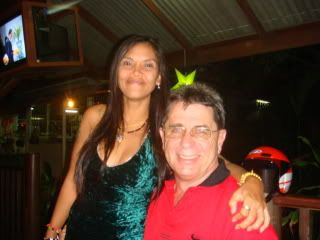 complelted the journey in 6 days - a little weary to say the least but comfortable with the realization that 10 days of relaxation awaited me. My main aim of coming to Pattaya was ato attend the wedding of my life long best friend Jeff Hunt.
complelted the journey in 6 days - a little weary to say the least but comfortable with the realization that 10 days of relaxation awaited me. My main aim of coming to Pattaya was ato attend the wedding of my life long best friend Jeff Hunt.
OFF TO CAMBODIA
After 10 vey lazy days in Pattaya it was time to cycle further south and around the Gulf of Thaland and into Cambodia. Highway 1 followed the coastline through the scentic fishing villages of Rayon, Ban Pha and Trat. With the wind still on my back, the terrain flat and beautiful coastal views to my right it certainly made for pleasurable cycle touring. Was this what cycle touring was meant to be. It was certainly not a physically demanding as the previous 5 months of toiling over the mountains of northern Thai, China and Laos.
SIHANOUKVILLE
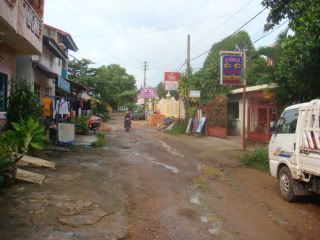
Once in Cambodia I headed for the seaside town of Sihanoukville. Knowing that I only had a few hundred kms of coastal road to traverse before I reached the border of Vietnam I slowed my pace down even more and spent the bulk of my time in Sihanoukville, Kampot, Ream National Park and Kep. From Kep it was only a couple of hours cycling to the border crossing of Prek chak where I would begin my journey through the Mekong Delta
REAM NATIONAL PARK
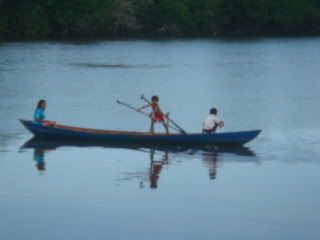
Again in a a very cold and unfriendly manner not dissimilar to Arnold Schwartzenegger "Stay here, I''ll be back." Not a friendly "Would you like a cold drink while I go and check on your passport details."
An hour elapsed before the officer returned. Thinking I was going to have to dig deep into my wallet, he thrust my passport under my nose and said that I free to go. No explanation and no have a nice holiday.
Without hesitation I straddled my bike, road over Friendship Bridge and into a friendly Thailand. It was good to be back
Nong Khai is a sleepy town, sluggish in pace and stretched along the banks of the Mekong. Booked into a guesthouse for a couple of days to soak up the atmosphere before I summoned up the mental and physical strength to cycle the 700km south through central Thaland to the coastal resort of Pattaya.
With the lofty mountains behind me I headed south with a strong tail wind through the central plains of Thaland. With a stiff tail breeze and nothing more than speed bumps to climb over I was comfortably riding 100km before lunch. With the dangling carrot of lazing on the white sands and swimming in the aqua waters of Koh Lan I
 complelted the journey in 6 days - a little weary to say the least but comfortable with the realization that 10 days of relaxation awaited me. My main aim of coming to Pattaya was ato attend the wedding of my life long best friend Jeff Hunt.
complelted the journey in 6 days - a little weary to say the least but comfortable with the realization that 10 days of relaxation awaited me. My main aim of coming to Pattaya was ato attend the wedding of my life long best friend Jeff Hunt.OFF TO CAMBODIA
After 10 vey lazy days in Pattaya it was time to cycle further south and around the Gulf of Thaland and into Cambodia. Highway 1 followed the coastline through the scentic fishing villages of Rayon, Ban Pha and Trat. With the wind still on my back, the terrain flat and beautiful coastal views to my right it certainly made for pleasurable cycle touring. Was this what cycle touring was meant to be. It was certainly not a physically demanding as the previous 5 months of toiling over the mountains of northern Thai, China and Laos.
SIHANOUKVILLE

Once in Cambodia I headed for the seaside town of Sihanoukville. Knowing that I only had a few hundred kms of coastal road to traverse before I reached the border of Vietnam I slowed my pace down even more and spent the bulk of my time in Sihanoukville, Kampot, Ream National Park and Kep. From Kep it was only a couple of hours cycling to the border crossing of Prek chak where I would begin my journey through the Mekong Delta
REAM NATIONAL PARK

Sunday, July 19, 2009
THE CANDLE FESTIVAL
The Candle Festival is a woman's parade. It gives young women an opportunity to dress in the height of their traditional finery and display their dancing prowess. This festival takes place on Wan Asa Laha Puja day, the day before the start of buddhist Lent when every Buddhist male is expected to enter a temple at least once in their lives.
Subscribe to:
Posts (Atom)
